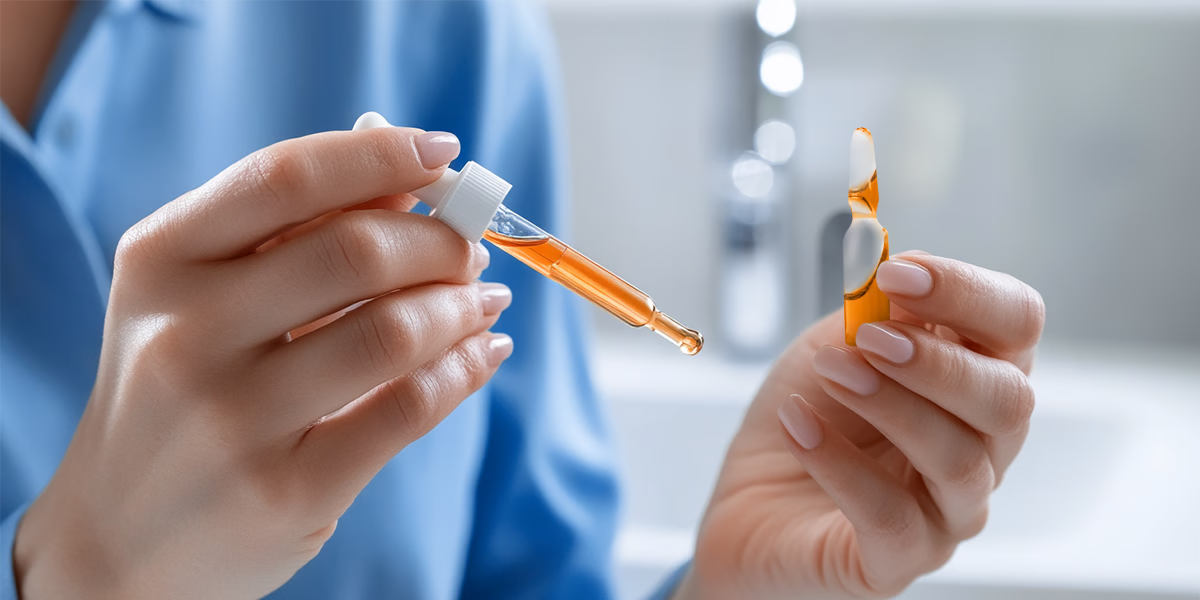
Have you heard of PFAS compounds? Although the acronym may seem complicated, the possible harm they could cause to our health is even more intricate. This article explains the locations of these nefarious chemical substances, how to recognize them, and how to lessen their negative effects on our health.
What are PFAS chemicals?
PFAS chemicals, also known as polyfluoroalkyl substances, have become a modern health concern. They were first discovered in 1886 and were originally used to make weapons. Their exceptional resilience, which was formerly advantageous in withstanding demanding procedures, now presents possible hazards because of their gradual deterioration.
They are frequently found in consumer goods like non-stick cookware and packaging materials in homes, despite their typical usage in industrial environments like the aerospace or construction industries.
How could these chemicals affect me?
Given the widespread use of PFAS chemicals, estimates suggest that 100% of Americans are exposed to at least one PFAS. Long-term exposure to PFAS chemicals can be harmful, according to research. Exposure to PFAS chemicals can lead to:
- Immune system impairment. Various infections due to altered immune response.
- Reproductive toxicity. Gestational hypertension and preeclampsia (high blood pressure during and post-pregnancy).
- Developmental toxicity. Slowed growth in fetuses and children.
- Cancers. Increased risk of kidney cancer, breast cancer, and testicular cancer.
- Organ toxicity. Diseases such as ulcerative colitis and liver enzymes alterations.
- Dyslipidemia. Changes in the blood levels of lipids (cholesterol).
Which household products may contain PFAS?
PFAS compounds frequently lurk in plain sight. PFAS chemicals can be found in a number of everyday household items, including:
- Cookware. Nonstick baking and cooking utensils. Consider using cast iron pots or high-quality steel cookware in place of non-stick cookware.
- Food packaging. Fast-food, confectionery, and burger wrappers. Use safer options whenever possible, like a steel bento box or reusable sandwich bags.
- Clothing. water-resistant materials for jackets, gloves, umbrellas, and tents. Look for companies that provide PFAS-free substitutes.
- Cosmetics. lip balms, foundation creams, and sunscreen. You can try some apps to find products that are free of PFAS.
- Electronic products. Cell phones, cameras, and lithium batteries. When recycling or discarding these electronics, exercise extra caution.
- Medical supplies. Oral capsules, wound care, and lenses. Find out about safer options by asking your healthcare provider.
- Cleaning supplies. Dishwashing liquid, detergents. You can look up a suitable option online or choose from safer alternatives offered by certain brands.
You can locate safe substitutes for PFAS-containing household products by visiting online marketplaces or your neighborhood shopping center.
Furthermore, occupational exposure—the term used to describe exposure to PFAS chemicals—occurs in the workplace. For example, farmers are exposed to pesticides and fertilizers; firefighters are frequently exposed to firefighting foam. However, a bigger concern is that PFAS can be found in food and water.
Foods to avoid for high PFAS levels
Foods can get easily contaminated with PFAS chemicals. Options that are commonly detected with high PFAS may include fish and seafood, for example, salmon, trout, and similar found in contaminated water. Moreover, foods high in PFAS include microwave popcorn, bacon, sausages, luncheon meats, and butter.
Information about impacted waterways is typically provided by the Environmental Protection Agency (EPA). In the interim, the US Food and Drug Administration (FDA) offers recommendations to prevent PFAS chemical contamination of food. In the event that you have any questions, visit their website.
What can I do to prevent exposure?
Here are some tips to prevent exposure to these chemicals:
- Cleaning. PFAS compounds gather on carpets and rugs, among other surfaces. Reducing exposure to PFAS chemicals can be achieved through routine washing and frequent cleaning (vacuuming).
- PFAS-free products. Ask the vendor or do internet research to find out if a product contains PFAS chemicals before purchasing it.When it is feasible, buy products devoid of PFAS.
- Awareness about labels. Products that have labels like “water-resistant” or “stain-resistant” may contain PFAS compounds. When it is feasible, steer clear of such purchases by carefully reading product labels.
- Footwear. Our shoes might bring PFAS chemicals into our homes. To lessen the amount of PFAS chemicals inside homes, take off shoes near the door.
- Reheating food. To reheat takeout, use PFAS-free dishes or plates rather than grease-resistant packaging.
- Home water filters. Filtering drinking water reduces the amount of PFAS ingestion.
Removing PFAS from your drinking water
PFAS chemicals can be found in your drinking water. The most common culprit is the firefighting foam that gets mixed with surface water. In addition, drinking water can be contaminated by industrial waste, cosmetics that wash off, leaching from landfills, or improperly disposed of electronic devices.
Reducing PFAS chemical levels in drinking water is possible with home filtration systems. It’s important to note that boiling water doesn’t eliminate PFAS. Budgetary restrictions may prevent municipal utilities from installing filtration systems throughout the entire city. Smaller home filters are an option for individuals, and NSF International provides a database of filters that effectively remove PFAS. In situations where filters are not accessible, consider alternative water sources such as bottled water.
Testing and removing PFAS from your body
PFAS in the body can be detected by blood testing, like serum or plasma concentrations. Less than 2 nanograms per milliliter (ng/mL) of PFAS exposure often has no negative consequences right away.Above 20 ng/mL, a higher probability of negative consequences is seen. These consequences include a higher chance of obesity, weakened immune systems, different malignancies, and abnormalities in development.
Depending on the source of exposure, clinicians recommend methods to potentially reduce PFAS levels through dietary and lifestyle changes. For example, it is advised that individuals who work in jobs that expose them to PFAS chemicals limit their exposure and undergo testing on a regular basis. This also includes utilizing personal care products free of PFAS and avoiding processed foods, as was previously discussed.
PFAS compounds have a half-life that can range from a few hours to ten years in the human body.The greatest treatment is prevention because of how long these poisons can remain in the body.If you observe changes in blood pressure, weight, thyroid, or liver function, speak with your healthcare professional. Additionally, if you suspect increased exposure to PFAS, see your doctor before symptoms arise.
To put it briefly, practically every American has come into contact with a PFAS chemical.Common home products including makeup, cookware, clothes, and medications include these compounds. Reducing PFAS exposure is crucial because it is linked to an elevated risk for a number of diseases.
FAQ
Why are products made with PFAS?
PFAS chemicals are water-resistant, which makes them suitable for various consumer products such as take-out containers, non-stick cookware, cleaning supplies, and waterproof clothing.
How long does it take to eliminate PFAS from our bodies?
As environmental exposure declines, the level of PFAS chemicals declines. However, currently, the exact length of time for the elimination of PFAS is unknown.
Are PFAS harmful to our health?
Yes, prolonged exposure to PFAS chemicals can have a harmful impact on our health. Among the negative impacts of PFAS compounds are altered blood lipid levels, decreased immunological function, and an increased risk of kidney cancer.









Leave a Reply